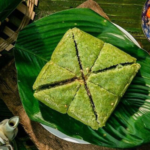Banh chung is not just a cultural symbol of the Vietnamese people, but it also brings very special nutritional values. Join us to learn about this unique cake!
1 How many calories are in 100g of banh chung?
How many calories are in 100g of banh chung?
Banh chung is a nutritious and healthy dish. 100g of banh chung provides approximately 181kcal of energy (1 kcal = 1000 calories).
 How many calories are in 100g of banh chung?
How many calories are in 100g of banh chung?
In addition, 100g of some other types of banh chung will provide the following energy:
- Banh chung chay: 150 kcal
- Banh chung nep cam: 169 kcal
- Banh chung com: 52 kcal
- Banh chung gac: 170 kcal
Nutritional content of banh chung
In 100g of banh chung, you will find on average:
- 4.3g protein
- 4.2g fat
- 31.6g carbohydrates
- 0.6g fiber
- 26g sugar
- 0.94g sodium
- 1.4g potassium
2 What are the benefits of eating banh chung?
Eating banh chung offers several health benefits:
Aids in detoxification and cooling the body: Containing ingredients such as mung beans, banh chung helps to cool the body, improve skin texture, and remove toxins. Additionally, the sticky rice in banh chung can help treat excessive sweating, dizziness, and headaches.
 Eating banh chung helps detoxify and cool the body
Eating banh chung helps detoxify and cool the body
Provides protein: With its filling, banh chung is a good source of protein, an essential nutrient for people of all ages.
Antibacterial and antifungal properties: The cloves in the ingredients of banh chung contain oleoresin, which has antibacterial and antifungal effects and supports blood clotting.
Prevents bloating: The cloves in banh chung have antiseptic properties and help prevent bloating, slow digestion, and intestinal infections.
Promotes digestion and acts as a diuretic: The dong leaves used in banh chung have a cooling effect, helping to detoxify and act as a diuretic. In addition, dong leaves help preserve the cake, maintaining its green color, fragrance, and appetite-stimulating properties, which aid in digestion.
3 Will eating banh chung make me fat?
100g of banh chung contains 181kcal, so eating just 200g can lead to weight gain and a potential loss of control over your weight.
 Will eating banh chung make me fat?
Will eating banh chung make me fat?
Deep-fried banh chung is especially high in fat. Eating too much of it can stimulate your appetite, leading to overeating and subsequent weight gain.
4 Is it healthy to eat a lot of banh chung?
To burn off the 181kcal provided by 100g of banh chung, you would need to cycle or run non-stop for 24 minutes, swim for 16 minutes, or engage in other intense physical activities. Even with a dedicated gym routine, you can only burn a maximum of 350kcal per session. Therefore, it is recommended to limit your consumption of banh chung to around 100-150g per day and maintain a healthy lifestyle with regular exercise to maintain your figure.
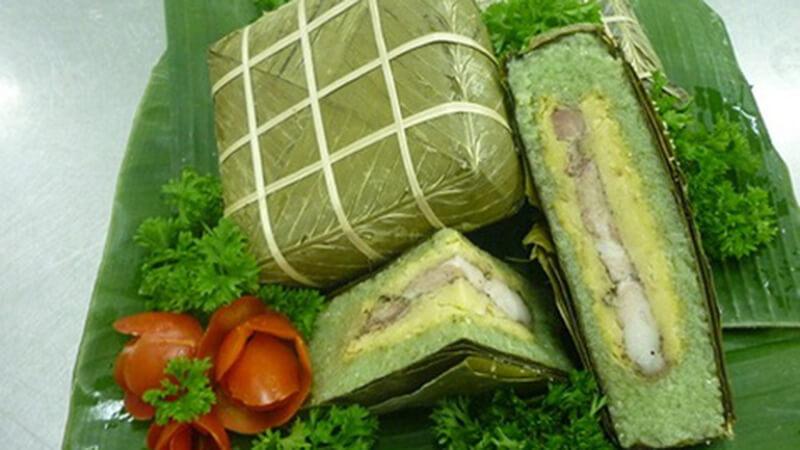 Is it healthy to eat a lot of banh chung?
Is it healthy to eat a lot of banh chung?
Additionally, the following groups of people should avoid eating too much banh chung:
Overweight or obese individuals: Since banh chung is energy-dense and high in fat, those who are already obese should refrain from consuming it, especially the deep-fried version, which contains more oil.
People with high blood pressure and cardiovascular diseases: Those with these conditions should also stay away from banh chung, as both diseases require a diet low in protein and fat.
Pregnant women: Eating too much banh chung during pregnancy can cause bloating and indigestion, leading to discomfort.
People with kidney disease: Those with kidney disease often have accompanying symptoms such as high blood pressure, dyslipidemia, or hyperlipidemia, so they should avoid banh chung due to its high-fat content.
People with stomachaches: Banh chung, made with sticky rice and mung beans, can aggravate stomachaches by producing gas, causing bloating, acid reflux, and indigestion.
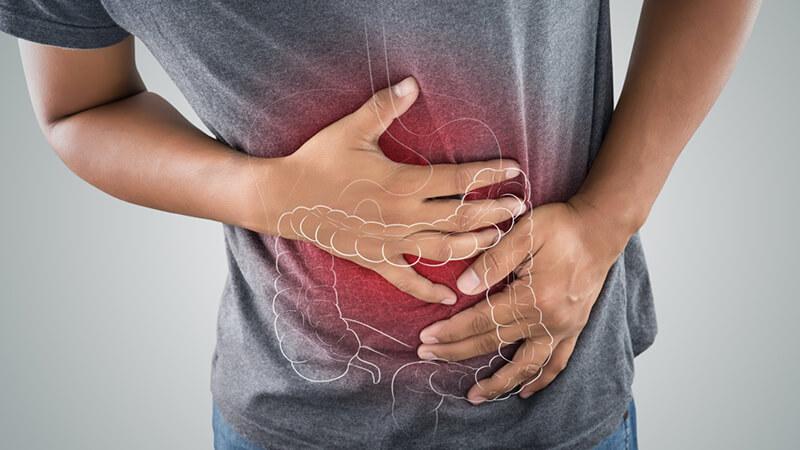 Groups who should avoid eating too much banh chung
Groups who should avoid eating too much banh chung
People with boils: Those suffering from boils should only eat a small amount of banh chung, as it can worsen their condition.
5 How to eat banh chung without gaining weight
Avoid deep-fried banh chung
Deep-fried banh chung is typically high in fat. Overconsumption can lead to bloating, abdominal distension, indigestion, discomfort, and uncontrolled weight gain.
 Avoid eating banh chung with other starchy foods
Avoid eating banh chung with other starchy foods
Don’t eat banh chung with other starchy foods
If you’ve already had banh chung for a meal, avoid eating other starchy foods like rice, sticky rice, or bread. Consuming too much starch at once can lead to weight gain and obesity.
Eat it with green vegetables
 Eat banh chung with green vegetables
Eat banh chung with green vegetables
Eating banh chung with green vegetables like water spinach, water morning glory, and mustard greens is an excellent way to control your weight. These vegetables help speed up the metabolism of carbohydrates and prevent feeling stuffed.
Exercise to burn calories
Engaging in sports and physical activities is an effective way to burn off the calories from banh chung and prevent weight gain. Regular exercise promotes a healthy lifestyle and improves overall well-being. You can try cardio workouts or sports like swimming, gym training, or running.
6 When is the best time to eat banh chung during the day?
Eating banh chung in the evening can lead to rapid weight gain, bloating, indigestion, and sleep disturbances. Therefore, if you love this dish, it is best to eat it for breakfast or lunch. Limit your consumption to about 100g per meal, or approximately ⅛ of a cake.
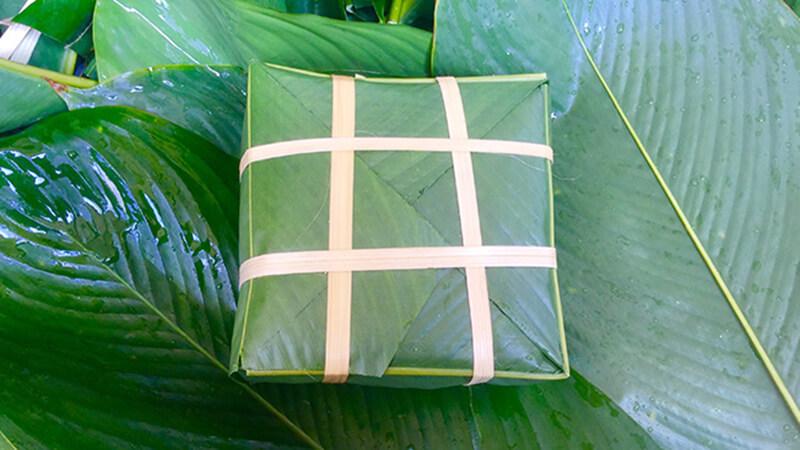 When is the best time to eat banh chung during the day?
When is the best time to eat banh chung during the day?
7 How to make banh chung at home
Banh chung is made from simple ingredients: sticky rice, mung beans, and pork belly. The ingredients are wrapped in dong or banana leaves and boiled for 5 hours, then soaked in cold water for 20 minutes, and finally pressed for 5 to 8 hours.
The aroma of banh chung comes from the fragrant dong leaves. The sweetness of the mung beans, the richness of the pork belly, and the sticky texture of the rice create a delicious harmony, making it a traditional dish during the Tet holiday.
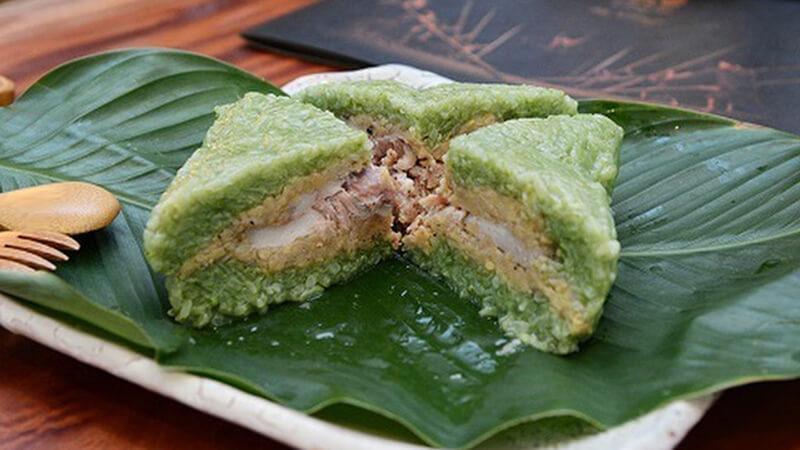 How to make banh chung at home
How to make banh chung at home
For more information, please refer to:
8 Things to note when eating banh chung
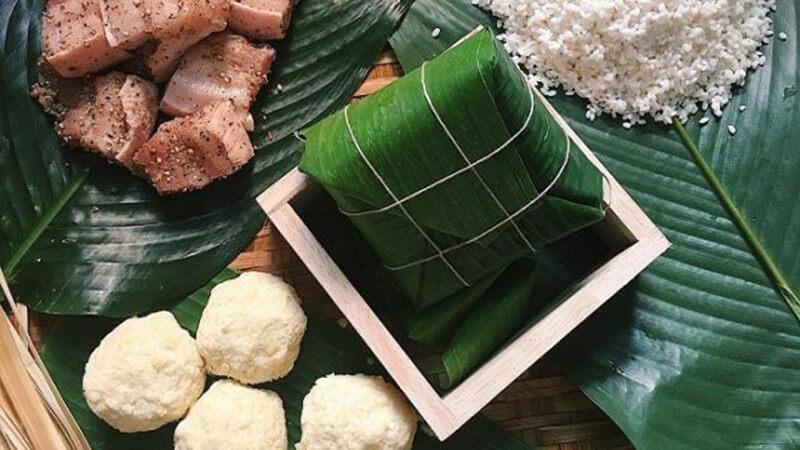 Things to note when eating banh chung
Things to note when eating banh chung
Here are some things to keep in mind when eating banh chung:
- Avoid eating too much banh chung. Limit your consumption to 100g per meal and no more than 150g per day.
- Pay attention to the recommended intake for specific groups and those who should avoid it. In particular, people with high blood pressure and cardiovascular diseases should stay away from banh chung.
- Eat it with green vegetables to aid digestion.
- Avoid eating banh chung in the evening.
This article has provided information about the nutritional value of banh chung and important considerations when consuming it. We hope you have found this information useful.
Source: Lao Dong Newspaper

























